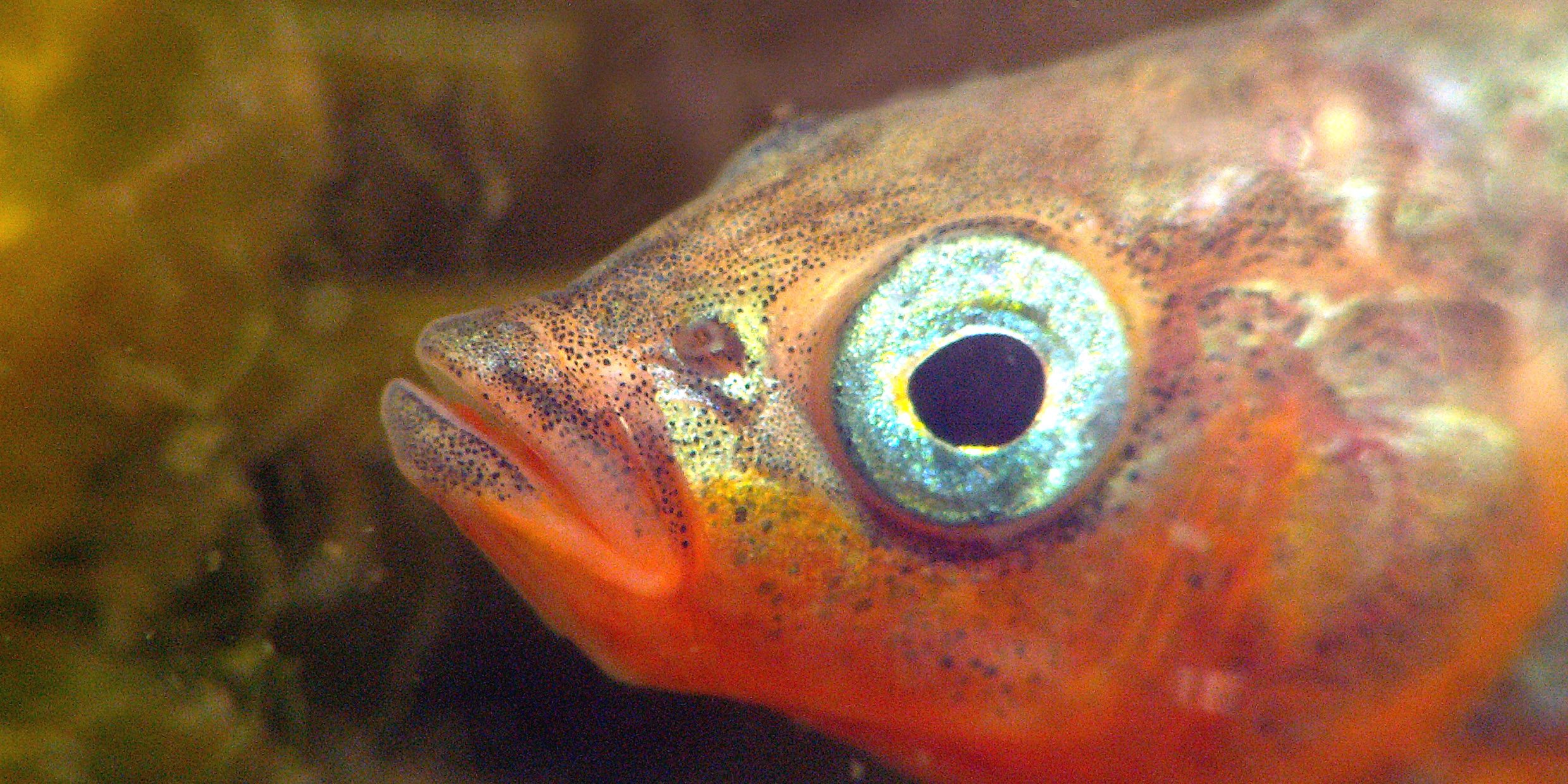Originally published 14 May 1990
It’s not easy being a stickleback.
First, there’s the rather unattractive name, drawing attention to those spikes on the back where other fishes have fins.
Then there’s disease. Sticklebacks are host to a wide range of parasites, which can be a problem for a fish no bigger than your little finger.
And one could mention the unappetizing diet, worms and such sucked up from the bottoms of lakes, streams, and coastal waters where sticklebacks live.
But the biggest problem of all is — well, to put it bluntly, it’s scientists, especially those who study animal behavior. Scientists just won’t leave sticklebacks alone.
Not that the attentions of scientists are all bad. Not at all. The Nobel prize-winning Austrian ethologist Konrad Lorenz painted a flattering picture of sticklebacks in his popular book on animal behavior King Solomon’s Ring.
Just listen to Lorenz: “I know of no animal that can excel in hot-bloodedness a male stickleback… No animal becomes so completely transformed by love, none glows, in such a literal sense, with passion… Who could reproduce in words, what artist in color, that glowing red that makes the sides of the male stickleback glassy and transparent, the iridescent blue-green of its back whose color and brilliance can only be compared with the illuminating power of neon lighting, or finally, the brilliant emerald-green of its eyes?”
Konrad Lorenz died last year [in 1989] at age 85. He was not always popular among other scientists, especially American behaviorists of the Skinnerian school, but sticklebacks never had a better friend.
Lorenz was a rare type among animal researchers. He shunned highly-contrived laboratory experiments, preferring instead to just plop his fish into an aquarium and watch. That was his way — as much as possible to observe animals in their natural environment.
A stickleback experiment
As an example of a more typical approach by animal researchers, consider the experiments performed by Manfred Milinski and Theo Bakker at the University of Bern in Switzerland, reported in the March 22 [1990] issue of Nature.
At issue is the flashy red coloration male sticklebacks develop at the start of the breeding season (“a symphony of color,” wrote Lorenz). Milinski and Bakker ask if the intensity of color plays a role in female selection? And, if so, why?
I won’t go into the technical details of the Nature report — the graphs, the labored use of statistics, the exhaustive description of equipment (“aping physics,” Lorenz called it). The gist of the experiments is this:
A female stickleback in a plexiglass cell was placed between two aquariums, each containing a male whose color had been previously rated for brightness by laboratory assistants. The males performed their famous zig-zag courtship dance, and the female made her choice, indicated by a “heads up” posture in front of the chosen male. She usually selected the brighter male.
But was it really the intensity of color that attracted the female, or some other signal such as color contrast or dancing talent. The experiments were repeated in green light so that red coloration was not apparent. Now females made their choices essentially at random.
OK, so far, so good. Female sticklebacks prefer bright red males. But why? Hypothesis: Bright red males are likely to be parasite-free. Evolution has favored female choice based on color because bright mates are healthy mates.
Infested with parasites
Now here comes the part you are not going to like. To decide whether parasitical infection affects male coloration and female choice, the Swiss researchers infested the brighter male of each experimental pair with the parasite that causes a fish disease known as white spot. They did this by pouring contaminated water into selected tanks, and clear water into control tanks. Some males died and the experiments were repeated with the ailing survivors. As expected, white spots lessened the intensity of the diseased males’ coloration, and female interest declined accordingly.
Our researchers conclude: “The females probably did not make use of the male’s courtship intensity for their decision-making because courtship intensity is a poor predictor of condition. Perhaps even a sick or convalescent male can muster energy for the display when the need arises, but it is harder for him to bluff the long-term drain on his resources revealed by his lack of colour.”
Like most scientists, I favor the responsible use of animals in research, especially medical research, but I wonder if what we learn from these stickleback experiments (if anything) justifies the deliberate infestation of the animals with disease.
Am I being sentimental? I remember a famous photograph that appeared in Life magazine many years ago of white-haired Konrad Lorenz up to his chin in a pond observing — if I recall rightly — the behavior of a gaggle of geese. It is an image of ethological research that I find rather more attractive than the dumping of parasite-infected water into laboratory fish-tanks.
This sort of thing invites the cynicism of animal rights activists. If the experiments were performed with puppies or bunnies you can imagine the hue and cry.
Like I say, it’s not easy being a stickleback.



